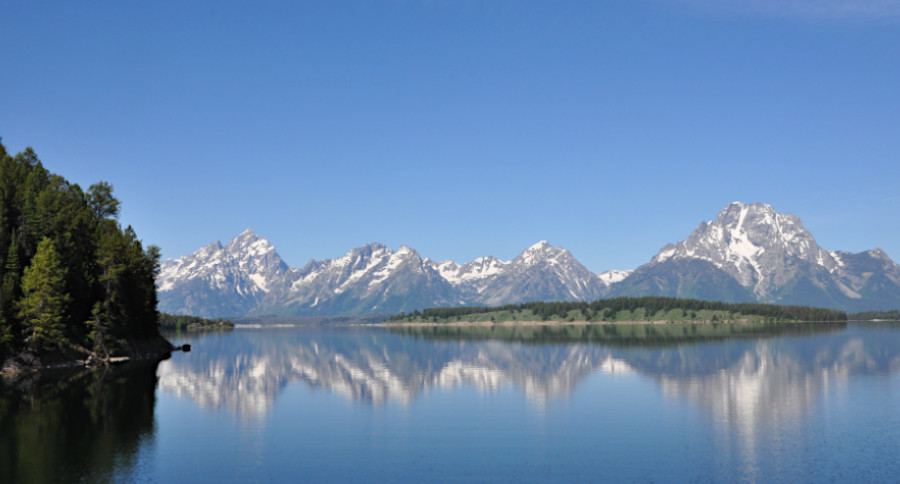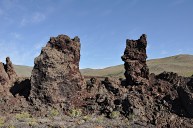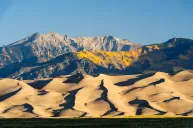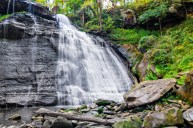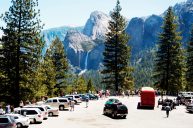What kind of National Park suits you best?
We just love the American National Park system. From California to Colorado, Virginia to Maine, these parks preserve some of the coolest natural areas in North America for future generations.
But what kind of National Park are you? Or more appropriately, what kind suits you best?
We have some suggestions along these lines based on your likes or dislikes, and we're focusing exclusively on "parks" and not national monuments or other federally-owned areas the National Park Service maintains.
If you like hot weather...
Can't stand the cold? Do you insist on visiting somewhere where it is warm? Well, it really doesn't get any hotter than Death Valley National Park.
In 1913, the hottest temperature ever recorded in history was a scorching 134-degree F day (56.7 degrees Celsius), and it happened here at Death Valley.
Ok, ok, maybe that's a bit too hot. But you can always go to a place like Everglades National Park in Florida, where the temperature hovers around the 80s and 90s for much of the year. Another option is Big Bend National Park, a sprawling, lesser-visited 800,000-acre wilderness area on the Texas/Mexico border that is sparsely visited and often has temperatures in the 90s.
If you love big cacti and desert environments, you can't go wrong with Saguaro National Park in Arizona. The average summer temperatures hover around 100 degrees, but the giant Saguaro cacti are truly a sight to behold at least once in your life.
If you like cold weather...
https://www.youtube.com/watch?v=01z29oEFrGA
For those who hate the heat, a good option is Denali National Park in Alaska. Even in the summer, temperatures don't get into the 90s too often. It usually sticks between the 50s and 70s during that time of year.
Denali is also home to the 20,310-foot Denali Peak, formerly known as Mount McKinley, the highest and one of the most remote mountain peaks in the United States. It's definitely a cool place to explore!
Another option is Wrangell-St. Elias National Park and Preserve. This place has unique mix of mountains and coastline that keeps it very cool. In the summer, the average temperature is 53 degrees which is a great temperature for exploring without getting overburdened by the summer heat.
If you dislike crowds of tourists...
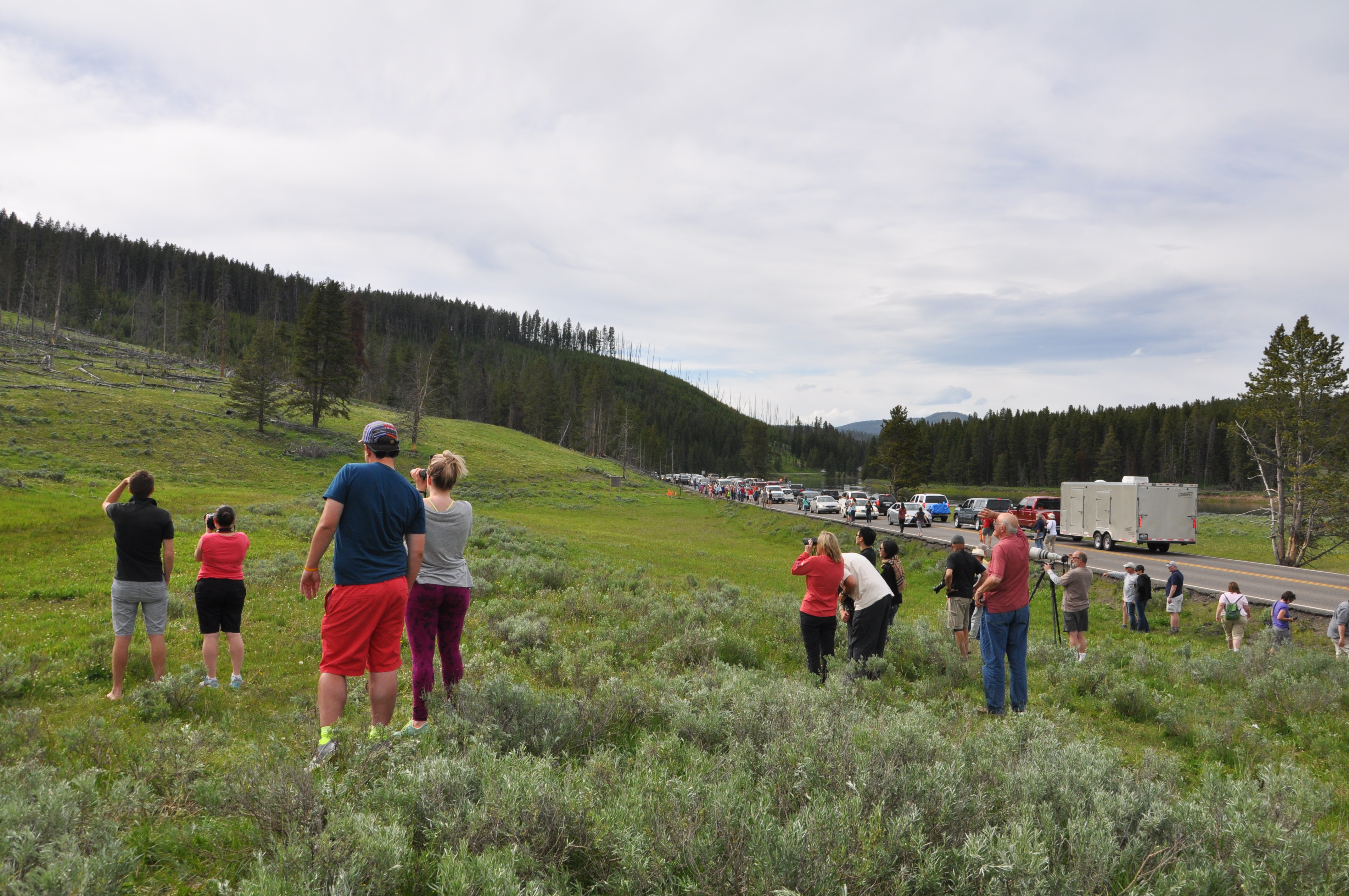
Travis Smola
If crowds are the last thing you want on your vacation, try Gates of the Arctic National Park in Alaska. It's the second largest in the U.S. at nearly 8.5 million acres, but gets only around 10,000 visitors a year due to it being in one of the most remote parts of Alaska.
Most people have probably never even heard of this park, meaning it's a great place to get away from the crowds.
In the continental United States, one of the least-visited National Parks is Isle Royale in Michigan. This park gets few visitors because it requires a ferry ride of up to four hours to reach its remote location in Lake Superior.
Once there, you can enjoy extremely rustic camping and miles and miles of hiking trails to explore. Watch out for moose and elk in the park's 571,790-acre expanse of wilderness. It gets less than 20,000 visitors a year.
A Pacific Northwest option is North Cascades National Park in Washington, which only gets around 20,000 visitors a year despite being only two hours from Seattle. Not that we're complaining too much. There is excellent camping and hiking here that's far away from the crowds of other parks.
If you like big trees...
Who doesn't enjoy giant trees? Luckily there are several great options for that.
Redwoods National Park in California offers you a glimpse at some of the biggest trees you will ever see. Exploring this park makes you feel like you're back amongst the dinosaurs in prehistoric times as you marvel at the colossal size of these towering trees growing on the fern-covered forest floor.
And don't forget about Sequoia and King's Canyon National Parks, also in California. You'll never feel as small as you do while standing near the base of a Sequoia that's wider than your car! King's Canyon also offers some breathtaking mountain vistas to enjoy. What's not to love about any of these parks?
If you like wildlife...
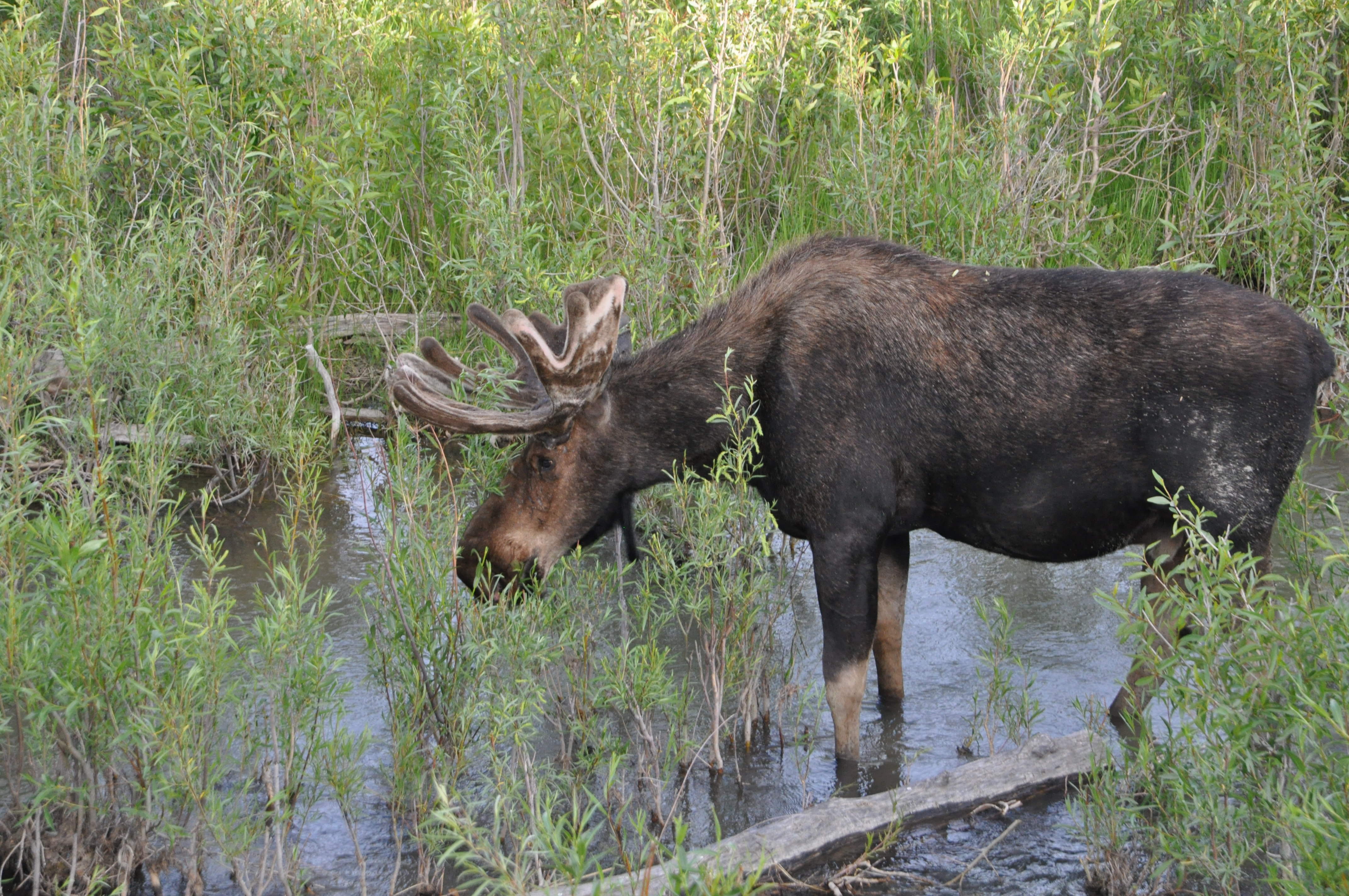
Travis Smola
People looking for wild animal encounters can't really go wrong with the first national park, Yellowstone! Deer, bear, elk, moose, bison, wolves, mountain lions, beavers, river otters, eagles and more reside within the park and are easily spotted from the main roads.
Another great option a little further north of Yellowstone is Glacier National Park, which also sees its share of wildlife sightings. In fact, many people think Glacier is a better spot to see bears than Yellowstone. Either way, you're sure to have some incredibly memorable wildlife encounters at these parks.
Other options include Glacier Bay National Park in Alaska, which is home to many grizzly and black bears. Glacier is also a great place to whale watch.
Channel Islands Park in California has a large population of elephant seals. Olympic National Park in Washington is home to big Roosevelt elk.
You can't really go wrong with any of these options for animal sightings.
If you like mountains...
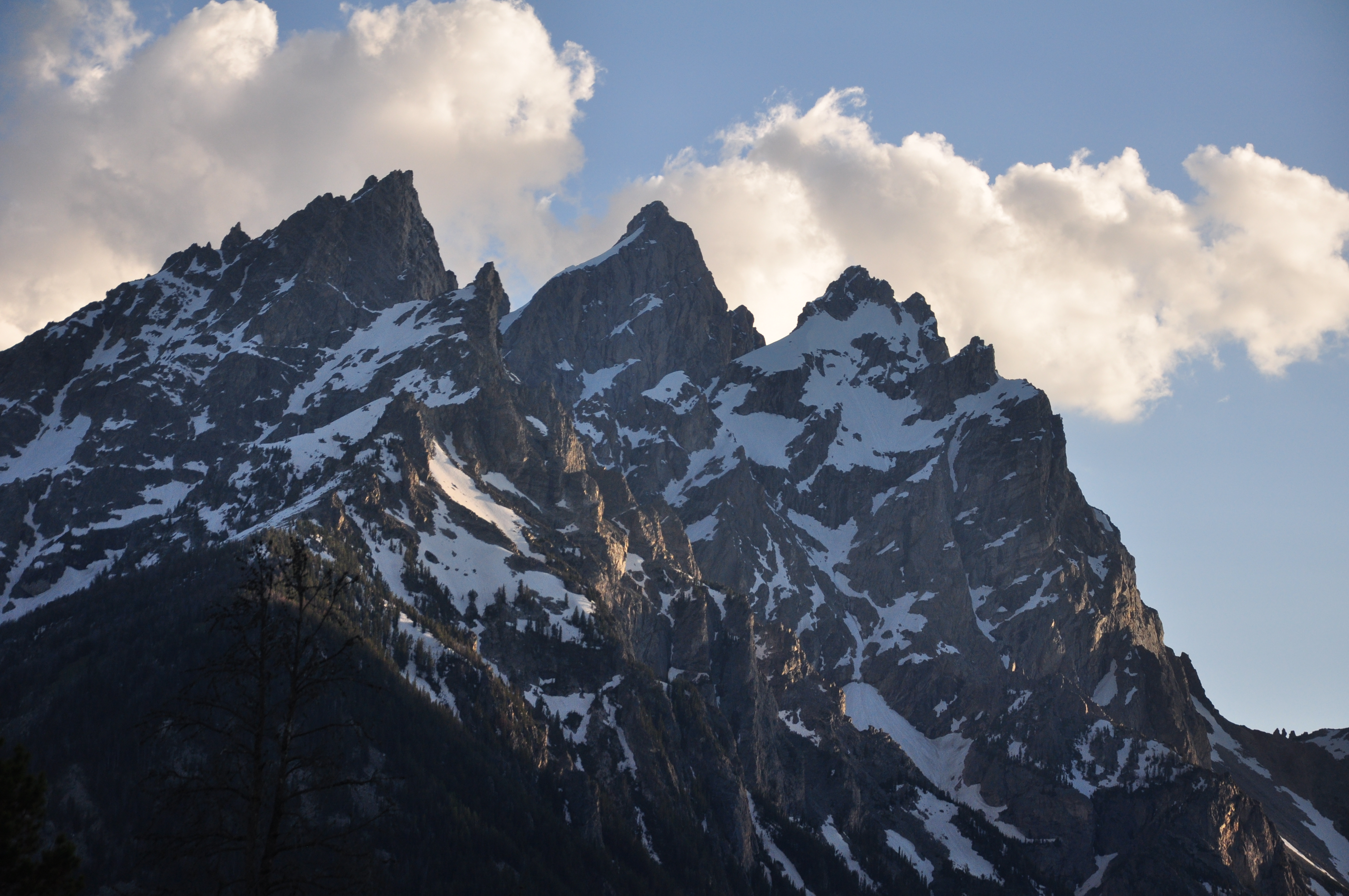
Travis Smola
Within the continental U.S., I firmly believe few places can top the Grand Tetons in Wyoming in terms of beautiful, snow-capped, rugged peaks. You'll find a million photo opportunities cruising the park's roads at sunset.
Crater Lake in Oregon is another good option. As the name suggests, the highlight here is a volcanic crater that is filled with some of the most beautiful blue waters you'll ever see.
Don't forget Rocky Mountain National Park in Colorado, either. There are tons of beautiful and rugged peaks to climb and explore.
Another option closer to the eastern part of the U.S. is Great Smoky Mountains National Park, located in both Tennessee and North Carolina. The Smokies aren't quite as rugged as the stuff further west, but they are breathtaking and filled with tons of black bears, making for a truly unique experience everyone should enjoy at least once. You can even hike a section of the Appalachian Trail while you're there.
If you like coastlines and beaches...
Areas along oceans and our Great Lakes don't get quite as much attention as the other, more wild national parks. But these areas can be just as enjoyable to visit.
Indiana Dunes National Park only recently received the upgraded designation, and it is a great place to take the family for some dune climbing and to enjoy the beautiful waters of Lake Michigan.
If you want more of an ocean feel, you can't go wrong with Dry Tortugas National Park in Florida. This park is located on a series of islands in the Gulf of Mexico takes some effort to travel to, but it's worth it. The island features a historic 19th century fort, shipwrecks, coral reefs, sharks and sea turtles. Because of the remote location, it's a place to get away from the crowds in other areas.
Another great option for a more northerly ocean experience is Seawall Acadia National Park in Maine. This park features one of the most spectacular natural seawalls you'll ever see. Just be warned this park gets a bit crowded, but it also offers some fine camping and hiking opportunities.
If you like history and fossils...

Travis Smola
Interested in American history, or even dinosaurs? There are plenty of options for both. Mesa Verde National Park in Colorado is a great place for enthusiasts of Native American culture and history. The site features ancient Pueblo cliff homes carved high up on a cliff face. It's truly a sight to behold.
If you're a fan of historic conservation figures, a visit to Yosemite National Park in California, a place beloved by John Muir, is a good place to check out.
Fans of dinosaurs and other fossils will be interested in Petrified Forest National Park in New Mexico, where just as the name suggests, you can see hundreds of petrified and fossilized trees.
Badlands National Park in South Dakota is a good stop for lovers of dinosaurs and other prehistoric animals, since many were discovered in the weird landscapes there.
If you like river views...
When it comes to rivers, you can't go wrong with Grand Canyon National Park. When you're standing on the rim of the canyon, it's hard to believe a river carved all that spectacular beauty.
It's the same in Zion National Park in Utah. The riverside walk trail is an especially gorgeous hike through deep red canyon walls along spectacular, rocky river.
For more outdoor content from Travis Smola, be sure to follow him on Twitter and check out his Geocaching and Outdoors with Travis Youtube channels.
NEXT: TORCH LAKE CAMPING: MICHIGAN'S VERSION OF A CARIBBEAN GETAWAY
WATCH
